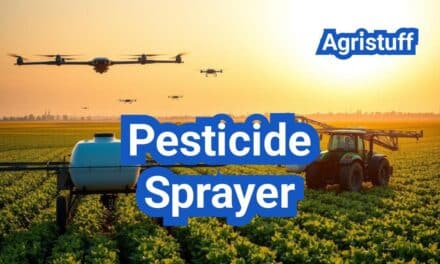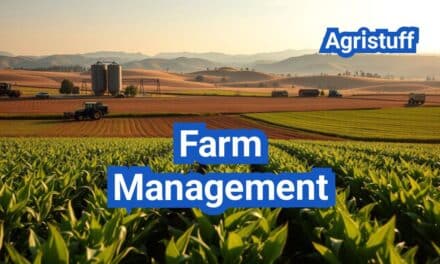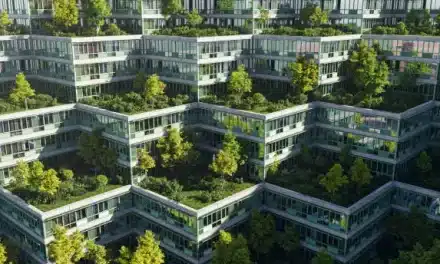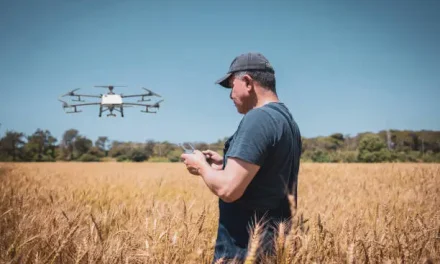Innovative farming methods are transforming the way we grow crops. One such method is indoor farming, also known as vertical agriculture, which involves using vertically arranged layers to produce crops in a controlled environment.
This approach to farming is gaining popularity due to its potential to increase crop yields while minimizing land use and environmental impact. By leveraging hydroponics and aeroponics, farmers can grow a wide variety of crops, from leafy greens to tomatoes, in a sustainable and efficient manner.
Key Takeaways
- Indoor farming is a method of growing crops in a controlled environment.
- Vertical agriculture can increase crop yields while minimizing land use.
- Hydroponics and aeroponics are key technologies used in vertical agriculture.
- This approach to farming can help address food security and sustainability challenges.
- Vertical agriculture is gaining popularity worldwide.
What Is Vertical Agriculture: Definition and Core Concepts
The concept of vertical agriculture involves cultivating crops in vertically arranged layers, often within controlled environments. This method of farming is gaining attention for its potential to increase crop yields while minimizing land use.
The Science Behind Growing Crops Vertically
Growing crops vertically involves using techniques such as hydroponics or aeroponics to nourish plants. Hydroponics is a method of growing plants in a nutrient-rich solution rather than soil, while aeroponics involves suspending roots in the air and spraying them with nutrient-rich mist.
The science behind these methods focuses on optimizing growing conditions for crops. By controlling factors such as light, temperature, and nutrient delivery, farmers can enhance crop growth and reduce environmental impact.
Key Principles of Controlled Environment Agriculture
Controlled Environment Agriculture (CEA) is a crucial aspect of vertical farming. CEA involves controlling factors such as temperature, humidity, and light to create optimal growing conditions. This approach allows farmers to:
- Maximize crop yields
- Reduce water consumption
- Minimize the use of pesticides and herbicides
- Enhance crop quality and consistency
By integrating advanced technologies and precise control over growing conditions, vertical agriculture offers a promising solution for sustainable food production.
The Evolution and History of Vertical Farming

Tracing back the history of vertical farming reveals a fascinating journey from ancient hanging gardens to modern skyscrapers. The concept of growing crops in vertically stacked layers has evolved significantly over time, influenced by technological advancements and the need for sustainable agricultural practices.
From Ancient Hanging Gardens to Modern Skyscrapers
The idea of vertical farming dates back to ancient civilizations, with examples such as the Hanging Gardens of Babylon, one of the Seven Wonders of the Ancient World. These early forms of vertical agriculture were driven by the need to produce food in areas with limited land availability.
In modern times, the concept has evolved with the integration of advanced technologies such as hydroponics, aeroponics, and LED lighting. Today, vertical farms are being developed in urban areas, utilizing abandoned buildings or constructing new skyscrapers dedicated to agricultural production.
Key Milestones in Vertical Farming Development
The development of vertical farming has been marked by several key milestones:
- Early 20th century: The concept of controlled environment agriculture begins to take shape.
- 1990s: The term “vertical farming” starts gaining popularity.
- 2000s: Advancements in LED technology and hydroponics/aeroponics systems accelerate the growth of vertical farming.
- 2010s: Large-scale commercial vertical farms begin to emerge, particularly in urban areas.
A significant aspect of modern vertical farming is its potential to increase crop yields while reducing environmental impact. The following table highlights some key statistics comparing traditional farming methods with vertical farming:
| Category | Traditional Farming | Vertical Farming |
|---|---|---|
| Land Use | Extensive land required | Minimal land use; can be urban |
| Water Usage | High water consumption | Recirculating systems reduce water use |
| Crop Yield | Variable; dependent on climate and soil | Consistent; can be higher due to controlled conditions |
The evolution of vertical farming represents a significant shift towards more sustainable and efficient agricultural practices. As technology continues to advance, we can expect to see further innovations in this field.
Vertical Agriculture vs. Traditional Farming Methods
Vertical agriculture and traditional farming represent two distinct approaches to crop production, each with its own set of advantages and challenges. As the world grapples with the challenges of feeding a growing population while minimizing environmental impact, understanding the differences between these two methods is crucial.
Land Use Efficiency Comparison
One of the most significant advantages of vertical agriculture is its ability to maximize land use efficiency. By growing crops in vertically stacked layers, often in urban environments, vertical farms can produce more yield per square foot than traditional farming methods. This is particularly beneficial in areas where arable land is scarce or under pressure from urbanization.
Traditional farming requires large tracts of land, which can lead to deforestation and habitat destruction. In contrast, vertical agriculture can be implemented in urban areas, reducing the need for extensive land use and preserving natural habitats.
Water Conservation Benefits
Vertical agriculture also offers significant water conservation benefits. Many vertical farming systems use hydroponics or aeroponics, which can reduce water usage by up to 90% compared to traditional farming methods. This is because the water is recirculated and reused within the system, minimizing waste.
In traditional farming, water is often lost through runoff, evaporation, and percolation into the soil. In contrast, vertical agriculture’s controlled environment allows for precise water management, reducing the overall water footprint.
Energy Requirements and Environmental Impact
While vertical agriculture offers several advantages, it also has higher energy requirements compared to traditional farming. The need for artificial lighting, climate control, and other systems to maintain optimal growing conditions can lead to increased energy consumption.
However, many modern vertical farms are turning to renewable energy sources and energy-efficient technologies to mitigate this issue. Additionally, the reduced need for transportation (as vertical farms can be located in or near urban areas) can lead to a lower overall carbon footprint.
Crop Yield and Quality Analysis
Vertical agriculture can offer higher crop yields and more consistent quality compared to traditional farming. The controlled environment allows for optimal growing conditions, reducing the impact of weather events, pests, and diseases.
Crops grown in vertical farms can be harvested more frequently, and the precise control over growing conditions can lead to improved crop quality. This can result in higher nutritional value and better taste, making vertical agriculture an attractive option for producing high-value crops.
Essential Technologies Powering Vertical Agriculture
Innovative technologies are transforming the agricultural landscape through vertical farming, making it more sustainable and productive. The integration of advanced technologies is crucial for optimizing crop growth, reducing environmental impact, and increasing efficiency.
Lighting Systems for Indoor Growth
LED lighting is a cornerstone of vertical agriculture, providing the necessary spectrum and intensity for plant growth. Modern LED grow lights are designed to emit specific wavelengths that promote photosynthesis, leading to healthier plants and higher yields. Some key benefits of LED lighting include:
- Energy Efficiency: LEDs consume less energy compared to traditional lighting methods.
- Customizable Spectrum: LEDs can be tailored to emit specific wavelengths that enhance plant growth.
- Longevity: LEDs have a longer lifespan, reducing maintenance and replacement costs.
Climate Control and Monitoring Systems
Maintaining optimal climate conditions is vital for crop success in vertical farming. Advanced climate control systems monitor and adjust temperature, humidity, and CO2 levels to create an ideal growing environment. These systems often include:
- Temperature Control: Precise temperature management to suit different crop requirements.
- Humidity Management: Maintaining optimal humidity levels to prevent water stress and disease.
- CO2 Enrichment: Enhancing CO2 levels to boost photosynthesis and plant growth.
Automation and Robotics Applications
Automation and robotics are revolutionizing vertical farming by increasing efficiency and reducing labor costs. Automated systems can handle tasks such as planting, monitoring, and harvesting, allowing for more precise and timely operations. Key applications include:
- Automated Planting: Robots that plant seeds with precision, reducing waste and improving uniformity.
- Monitoring Systems: Automated sensors that continuously monitor plant health and growth conditions.
- Robotic Harvesting: Machines that can harvest crops with minimal damage and high efficiency.
IoT and Smart Farming Integration
The Internet of Things (IoT) is playing a significant role in vertical agriculture by connecting various components of the farming system. IoT devices enable real-time monitoring and control, allowing farmers to make data-driven decisions. Smart farming integration includes:
- Real-Time Monitoring: Continuous data collection on environmental conditions and crop health.
- Predictive Analytics: Using data to predict potential issues and optimize growing conditions.
- Remote Control: Ability to adjust farming parameters remotely, enhancing flexibility and response times.
Types of Vertical Farming Systems

Different types of vertical farming systems are revolutionizing the way we grow crops. These systems are designed to optimize crop production, reduce environmental impact, and increase food security.
Hydroponic Vertical Farming Systems
Hydroponic systems are a popular choice in vertical farming, where plants are grown in a nutrient-rich solution rather than soil. This method allows for precise control over nutrient delivery, water usage, and climate conditions, resulting in faster growth rates and higher yields.
Key benefits of hydroponics include:
- Increased crop yields
- Water conservation
- Reduced land use
Aeroponic Systems
Aeroponic systems take hydroponics a step further by suspending plant roots in the air and misting them with a nutrient-rich solution. This method promotes healthy root development and can lead to even faster growth rates than traditional hydroponics.
The advantages of aeroponics include:
- Improved oxygenation of roots
- Reduced water usage
- Enhanced nutrient delivery
Aquaponic Integration
Aquaponics combines hydroponics with aquaculture, creating a symbiotic system where fish or other aquatic animals provide nutrients to the plants through their waste. This closed-loop system promotes biodiversity and can be highly efficient.
Benefits of aquaponics include:
- Diverse product output (both fish and crops)
- Efficient water use
- Reduced waste
Hybrid Vertical Farming Approaches
Hybrid systems integrate multiple farming methods, such as combining hydroponics with aeroponics or incorporating soil-based growing. These approaches can offer the benefits of multiple systems and provide flexibility in crop selection and management.
Hybrid systems can:
- Maximize space usage
- Improve crop diversity
- Enhance system resilience
Essential Vertical Farming Equipment Guide
The backbone of any vertical farm is its equipment, which includes growing structures, irrigation systems, and lighting. These components work together to create an optimal growing environment for crops.
Growing Structures and Racking Systems
Growing structures and racking systems are fundamental to vertical farming, providing the physical space for crops to grow. These systems can be customized to fit various types of crops and farm sizes. Modular designs are particularly popular as they allow for flexibility and scalability.
Irrigation and Nutrient Delivery Equipment
Irrigation and nutrient delivery systems are critical for providing crops with the necessary water and nutrients. Hydroponic and aeroponic systems are commonly used in vertical farming for their efficiency and ability to conserve water.
Lighting Equipment Selection
Lighting is a crucial element in vertical farming, especially in indoor settings where natural light is limited. LED grow lights are widely used due to their energy efficiency and ability to emit specific wavelengths beneficial for plant growth.
Environmental Monitoring and Control Systems
Environmental monitoring and control systems help maintain optimal growing conditions by regulating temperature, humidity, and CO2 levels. These systems often include sensors and automated controls to ensure a stable environment for crops.
By investing in the right vertical farming equipment, farmers can significantly improve crop yields and reduce operational costs. It’s essential to choose equipment that aligns with the specific needs of the crops being grown and the overall goals of the farm.
How to Plan Your Vertical Farming Project

Effective planning is the cornerstone of any successful vertical farming project. A well-structured plan ensures that your venture is sustainable, profitable, and environmentally friendly.
Site Selection and Space Assessment
Choosing the right location for your vertical farm is crucial. Factors to consider include accessibility, climate, and zoning regulations. Conduct a thorough assessment of the available space to determine its potential for vertical farming.
The site should be easily accessible for maintenance, harvesting, and distribution. Consider the proximity to markets and the availability of necessary infrastructure.
Budget Planning and ROI Calculations
Establishing a comprehensive budget is vital for the success of your vertical farming project. This includes costs associated with infrastructure, equipment, labor, and marketing.
| Cost Component | Estimated Cost | Percentage of Total Budget |
|---|---|---|
| Infrastructure | $100,000 | 40% |
| Equipment | $75,000 | 30% |
| Labor | $30,000 | 12% |
| Marketing | $20,000 | 8% |
| Miscellaneous | $25,000 | 10% |
Regulatory Compliance and Permits
Understanding and complying with local regulations is essential. Obtain necessary permits and ensure that your operation meets all environmental and health standards.
Regulatory compliance can be complex, so it’s advisable to consult with local authorities and legal experts to ensure that all requirements are met.
Team Building and Expertise Requirements
Assembling a skilled team is critical for the success of your vertical farm. You’ll need experts in areas such as agronomy, engineering, and marketing.
Invest in training to ensure that your team has the necessary skills to manage and maintain your vertical farming operation effectively.
Step-by-Step Guide to Building a Small-Scale Vertical Farm

To successfully build a small-scale vertical farm, one must consider several key factors, including layout, infrastructure, and climate control. This guide will walk you through the essential steps to establish a thriving vertical farming system.
Designing Your Vertical Farm Layout
Designing the layout is the first crucial step in building a small-scale vertical farm. The layout should maximize space while ensuring that plants receive adequate light and air circulation. Consider using a modular design to allow for flexibility and scalability.
When planning the layout, take into account the available space, the type of crops you intend to grow, and the equipment you will need. A well-designed layout will help in optimizing the growing conditions and improving crop yields.
Setting Up the Growing Infrastructure
The growing infrastructure is the backbone of your vertical farm. This includes the growing structures, such as hydroponic or aeroponic systems, and the supporting equipment like pumps, pipes, and nutrient delivery systems.
When setting up the growing infrastructure, it’s essential to choose systems that are suitable for your crops and scalable for future expansion. Ensure that all components are of high quality and compatible with each other.
Installing Lighting and Climate Control
Lighting and climate control are critical components of a vertical farm. LED grow lights are a popular choice due to their energy efficiency and ability to provide the necessary spectrum for plant growth.
Climate control involves regulating temperature, humidity, and air circulation. This can be achieved through the use of heating and cooling systems, humidifiers, and fans. Proper climate control ensures optimal growing conditions and helps prevent diseases.
Implementing Monitoring Systems
Monitoring systems are vital for maintaining the health and productivity of your vertical farm. These systems include sensors for monitoring temperature, humidity, light levels, and nutrient levels.
By implementing a robust monitoring system, you can automate many processes and receive alerts if any parameter goes out of the optimal range. This allows for timely interventions and helps in maintaining a stable growing environment.
Selecting the Right Crops for Vertical Farming Success

To achieve success in vertical farming, it’s essential to choose crops that are well-suited to the vertical farming environment. The right crop selection can significantly impact the profitability and sustainability of a vertical farm.
High-Value Crops Suitable for Vertical Systems
High-value crops such as leafy greens, herbs, and certain microgreens are particularly well-suited for vertical farming. These crops thrive in controlled environments and can be harvested in as little as 2-3 weeks, allowing for multiple crops per year.
Popular high-value crops include:
- Lettuce and other leafy greens
- Basil and other herbs
- Microgreens like radish and arugula
- Strawberries and other small fruits
Growth Cycle Considerations
Understanding the growth cycle of crops is crucial for maximizing yield in vertical farming. Crops with shorter growth cycles allow for more frequent harvesting and higher annual yields.
Key considerations include:
- Crop rotation to maintain soil health
- Growth rates and harvest frequencies
- Seasonal variations and their impact on growth
Market Demand Analysis
Conducting a thorough market demand analysis is vital for determining which crops to grow. Understanding consumer preferences and market trends can help vertical farmers make informed decisions about crop selection.
Market demand factors to consider:
- Local market trends and consumer preferences
- Competition from traditional farming and other vertical farms
- Opportunities for value-added products
Urban Vertical Farming Integration Strategies

Integrating vertical farming into urban landscapes is becoming increasingly important for sustainable development. As cities continue to grow, the need for innovative food production methods within urban environments becomes more pressing.
Retrofitting Existing Buildings
One of the most effective ways to integrate vertical farming into urban areas is by retrofitting existing buildings. This approach not only reduces the need for new construction materials but also revitalizes underutilized urban spaces. For instance, converting old warehouses or factories into vertical farms can provide a significant boost to local food production.
Key considerations for retrofitting include:
- Assessing the structural integrity of the building
- Ensuring adequate lighting and climate control
- Implementing efficient irrigation systems
Purpose-Built Vertical Farm Structures
Purpose-built vertical farm structures are designed from the ground up to optimize crop production. These structures can be tailored to specific crops and growing conditions, maximizing efficiency and yield. Examples include large-scale vertical farms like those developed by Plenty and Bowery Farming.
The benefits of purpose-built structures include:
| Feature | Benefit |
|---|---|
| Custom-designed growing areas | Optimized crop production |
| Advanced climate control systems | Consistent growing conditions |
| Efficient energy use | Reduced operational costs |
Community-Based Vertical Farming Models
Community-based vertical farming models involve engaging local communities in the farming process. This can include educational programs, community gardens, and cooperative ownership models. Such initiatives not only provide fresh produce but also foster community engagement and education on sustainable practices.
Retail and Restaurant Integration
Integrating vertical farming with retail and restaurant businesses can create a closed-loop system where produce is grown, sold, and consumed locally. This model reduces transportation costs and carbon footprint while providing customers with fresh, locally grown produce.
Examples of successful integration include:
- Restaurants incorporating vertical farms into their kitchen designs
- Retail stores featuring on-site vertical farming operations
Case Studies: Successful Vertical Farming Examples

Successful vertical farming examples are now emerging globally, showcasing the potential of this modern agricultural method. Companies like Plenty, Bowery Farming, AeroFarms, and Infarm are leading the way in innovative vertical farming practices.
Plenty Vertical Farming Operations
Plenty is a pioneer in vertical farming, utilizing advanced technology to grow a wide variety of crops. Their operations focus on maximizing yield while minimizing environmental impact.
Key Features:
- Advanced LED lighting systems
- Precision agriculture techniques
- Water conservation methods
Bowery Farming Headquarters and Technology
Bowery Farming is another notable player in the vertical farming space, with a focus on integrating technology into every aspect of their operations. Their headquarters showcases cutting-edge farming techniques.
Innovative Approaches:
- AI-powered crop monitoring
- Automated growing systems
- Sustainable practices
AeroFarms Large-Scale Implementation
AeroFarms has made significant strides in large-scale vertical farming, utilizing aeroponic systems to grow crops efficiently. Their approach has been praised for its scalability and sustainability.
| Feature | AeroFarms | Traditional Farming |
|---|---|---|
| Water Usage | 95% less | High |
| Crop Yield | Higher | Variable |
| Land Use | More efficient | Extensive |
Infarm’s Distributed Vertical Farming Model
Infarm has adopted a distributed vertical farming model, bringing farms closer to consumers. This approach reduces transportation costs and increases freshness.
Benefits:
- Reduced carbon footprint
- Increased produce freshness
- Community engagement
These case studies demonstrate the diverse approaches and technologies being employed in successful vertical farming operations. As the industry continues to evolve, we can expect to see even more innovative solutions.
Overcoming Challenges in Vertical Agriculture

As vertical agriculture continues to grow, it’s crucial to identify and overcome the challenges that threaten its sustainability and profitability. Vertical farming, while innovative and promising, faces several hurdles that need to be addressed for its successful implementation.
Energy Consumption Management Strategies
One of the significant challenges in vertical agriculture is high energy consumption. LED lighting, climate control systems, and other equipment require substantial energy to operate. To manage this, farms can adopt energy-efficient lighting such as LED grow lights that provide the necessary spectrum for plant growth while consuming less energy.
Another strategy is to integrate renewable energy sources such as solar or wind power to reduce reliance on non-renewable energy. This not only reduces operational costs but also makes the farm more sustainable.
| Energy-Efficient Measure | Description | Potential Savings |
|---|---|---|
| LED Grow Lights | Provide necessary spectrum for plant growth while consuming less energy | Up to 50% energy savings |
| Renewable Energy Integration | Use solar or wind power to reduce reliance on non-renewable energy | Up to 70% energy savings |
| Smart Climate Control | Optimize temperature and humidity levels to minimize energy usage | Up to 30% energy savings |
Addressing Initial Investment Hurdles
The initial investment required to set up a vertical farm can be substantial, including costs for infrastructure, equipment, and initial operational expenses. To address this, farmers can explore financing options such as loans or grants specifically designed for agricultural innovation.
Another approach is to start small and scale up gradually. This allows farmers to test their business model, refine their operations, and attract investors once they have a proven track record.
Technical Expertise Development
Vertical farming requires a unique blend of agricultural knowledge and technical expertise. To overcome this challenge, farms can invest in training and development programs for their staff. This includes workshops on the latest farming techniques, equipment operation, and data analysis.
Additionally, collaborating with research institutions and industry experts can provide access to the latest research and technologies, helping to improve farm operations and productivity.
Scaling Your Vertical Farm Operation
Scaling a vertical farm operation requires careful planning and strategic decision-making. One key strategy is to expand gradually, monitoring the success of each new phase before proceeding further.
Another important consideration is to invest in scalable technology from the outset. This includes modular growing systems and flexible climate control solutions that can be easily expanded as the farm grows.
By addressing these challenges head-on, vertical agriculture can continue to grow and thrive, providing a sustainable and productive solution for future food production needs.
The Future of Vertical Agriculture Technology

As the world grapples with the challenges of climate change and food security, vertical agriculture technology is poised to play a crucial role in shaping the future of farming. The industry is on the brink of a technological revolution, driven by innovations that promise to increase efficiency, productivity, and sustainability.
Emerging Technologies and Innovations
The future of vertical farming is being shaped by several emerging technologies. Artificial Intelligence (AI) and Machine Learning (ML) are being integrated into vertical farming systems to optimize growing conditions, predict crop yields, and detect potential issues before they become major problems. For instance, AI-powered monitoring systems can analyze data from sensors to adjust lighting, temperature, and humidity levels in real-time, ensuring optimal growing conditions.
Robotics and automation are also transforming vertical farming by streamlining labor-intensive tasks such as planting, pruning, and harvesting. This not only reduces labor costs but also increases efficiency and precision. Companies like AeroFarms are already leveraging robotics to improve crop handling and reduce waste.
Expanding Applications Beyond Food Production
While vertical agriculture is primarily associated with food production, its applications are expanding into other areas. Pharmaceutical companies are exploring the use of vertical farms to grow medicinal herbs and plants, providing a consistent and controlled supply of raw materials. Additionally, vertical farming is being used for cosmetic and skincare products, where plants like aloe vera and lavender are cultivated for their beneficial properties.
The technology is also being applied in urban planning and development, where vertical farms are integrated into building designs to provide fresh produce to local communities and enhance urban biodiversity.
Global Adoption Trends and Predictions
The global vertical farming market is expected to experience significant growth in the coming years, driven by increasing demand for sustainable and locally produced food. Asia is anticipated to be a major hub for vertical farming, with countries like China and Japan investing heavily in the technology. North America and Europe are also expected to see substantial growth, driven by consumer demand for fresh, locally grown produce.
As the industry continues to evolve, we can expect to see more innovative business models emerge, including subscription-based services and community-supported agriculture programs. The future of vertical agriculture technology holds much promise, and its potential to transform the way we produce food and other products is vast.
Finally: Embracing the Vertical Revolution in Agriculture
The vertical agriculture industry is transforming the way we produce food, offering a sustainable and efficient means of meeting the world’s growing demands. As we’ve explored throughout this article, vertical farming systems utilize cutting-edge technologies to optimize crop yields while minimizing environmental impact.
By embracing the vertical revolution in agriculture, we can create a more resilient food system that is better equipped to handle the challenges of climate change, population growth, and urbanization. Companies like Plenty, Bowery Farming, and AeroFarms are already leading the way, implementing large-scale vertical farming operations that showcase the potential of this innovative approach.
As the industry continues to evolve, we can expect to see even more efficient and sustainable practices emerge. By adopting vertical agriculture, we can help ensure a food-secure future for generations to come, marking a significant step forward in the conclusion of traditional farming methods and the beginning of a new era in agricultural production.
FAQ
What is vertical agriculture?
Vertical agriculture, also known as vertical farming, is a method of growing crops in vertically stacked layers, often in an indoor or controlled environment. This approach maximizes space usage and can increase crop yields while minimizing land use.
How does vertical farming work?
Vertical farming works by using a combination of technologies such as hydroponics, aeroponics, or other soilless cultivation methods to grow crops in a controlled environment. Crops are grown in vertically stacked layers, and the environment is controlled to optimize growing conditions.
What are the benefits of vertical agriculture?
The benefits of vertical agriculture include increased crop yields, reduced land use, water conservation, and improved crop quality. Vertical farming can also help to reduce the environmental impact of agriculture by minimizing the use of pesticides and other chemicals.
What types of crops are suitable for vertical farming?
A wide range of crops can be grown using vertical farming, including leafy greens, herbs, strawberries, and other high-value crops. The specific crops that are suitable will depend on the design of the vertical farm and the growing conditions.
What is the difference between hydroponics and aeroponics?
Hydroponics is a method of growing crops in a nutrient-rich solution rather than soil, while aeroponics is a method of growing crops in the air, with roots suspended in a chamber and receiving a fine mist of nutrient-rich solution.
How is vertical farming profitable?
Vertical farming can be profitable by producing high-value crops, reducing waste, and improving crop yields. Additionally, vertical farms can be located in urban areas, reducing transportation costs and providing fresh produce to local markets.
Are there any vertical farms in the UK?
Yes, there are several vertical farms in the UK, with companies such as Infarm and Jones Food Company operating large-scale vertical farming operations.
What is the future of vertical agriculture technology?
The future of vertical agriculture technology is expected to involve continued innovation and advancements in areas such as LED lighting, climate control, and automation. This is likely to improve crop yields, reduce energy consumption, and increase the efficiency of vertical farming operations.
What are the challenges faced by vertical agriculture?
The challenges faced by vertical agriculture include high initial investment costs, energy consumption, and the need for technical expertise. Additionally, vertical farms may face challenges related to scaling operations and maintaining crop quality.
How can vertical farming help address food security challenges?
Vertical farming can help address food security challenges by providing a reliable and consistent source of fresh produce, even in areas with limited arable land or harsh climate conditions. By increasing crop yields and improving crop quality, vertical farming can help to improve food security and reduce the environmental impact of agriculture.
Conclusion of: Vertical Agriculture
Vertical agriculture is a modern farming method that involves growing crops in stacked layers, often integrated into buildings, shipping containers, or vertically inclined surfaces. As the global population continues to grow and urban spaces become more congested, vertical agriculture presents a sustainable solution to food production, especially in urban environments.
Learn more from the USDA on vertical farming
What Is Vertical Agriculture?
Vertical agriculture is the practice of cultivating plants in vertically stacked structures. This method optimizes space and makes it possible to farm in urban settings or areas with limited arable land. Using controlled-environment agriculture (CEA) technologies, vertical farming regulates temperature, light, humidity, and gases to maximize crop yield.
Read about vertical farming systems from the FAO
How Does Vertical Agriculture Work?
Vertical agriculture typically involves hydroponic, aeroponic, or aquaponic systems. These soil-less techniques rely on nutrient-rich water or mist to feed plants. LED lighting systems replace natural sunlight, and climate control technologies ensure ideal growing conditions year-round. Automation and AI further enhance productivity and efficiency.
Explore hydroponic systems by NASA
Advantages of Vertical Agriculture
Vertical agriculture offers several benefits:
- Efficient Land Use: Grows more food per square foot.
- Reduced Water Usage: Uses up to 95% less water than traditional farming.
- Pesticide-Free Produce: Controlled environments reduce the need for chemicals.
- Proximity to Consumers: Lowers transportation costs and carbon emissions.
Check research from the University of Michigan on resource efficiency
Challenges Facing Vertical Agriculture
Despite its promise, vertical agriculture has hurdles:
- High Startup Costs: LED lights, automation, and climate systems are expensive.
- Energy Consumption: Climate control and lighting can drive up electricity use.
- Limited Crop Variety: Leafy greens dominate due to current technology constraints.
Read a critical analysis from Purdue University
Technologies Used in Vertical Agriculture
Key technologies include:
- LED Lighting: Mimics the sun’s spectrum.
- Hydroponics and Aeroponics: Deliver nutrients directly to roots.
- Automation & AI: Manage growing conditions and detect plant stress.
- Sensors & IoT: Monitor pH, humidity, and nutrient levels.
Explore vertical farming tech on AgFunderNews
Vertical Agriculture and Urban Food Security
With urban populations surging, vertical agriculture can ensure local food security. By growing fresh produce near urban centers, it reduces dependence on distant supply chains and ensures quicker access to nutritious food.
UN report on food security and urban agriculture
Economic Potential of Vertical Agriculture
Vertical farming is attracting investors worldwide. Market reports predict multi-billion-dollar growth over the next decade. Cities like New York, Singapore, and Dubai are already leading the charge, showcasing scalable models for vertical agriculture.
Market forecast from Allied Market Research
Environmental Impact of Vertical Agriculture
Vertical agriculture reduces land degradation, deforestation, and pollution. By recycling water and using fewer chemicals, it lowers its environmental footprint. However, energy use remains a concern that ongoing innovations aim to resolve.
Environmental insights from Columbia Climate School
Final Thought
Vertical agriculture represents a forward-thinking solution to the limitations of traditional farming. As the world grapples with population growth, climate change, and urbanization, this innovative method holds the promise of sustainable, efficient, and localized food production. While challenges exist, ongoing advancements in technology and growing investment suggest a bright future for vertical agriculture.










